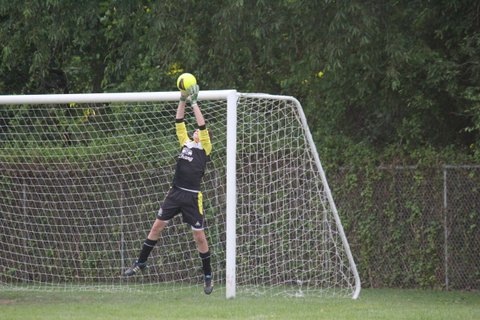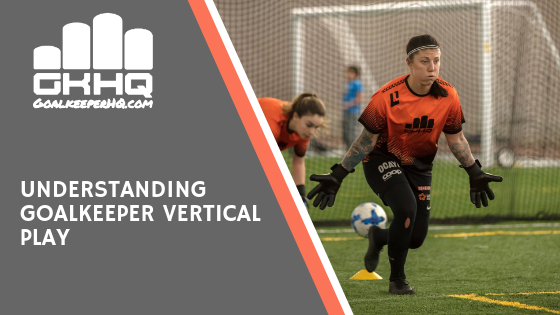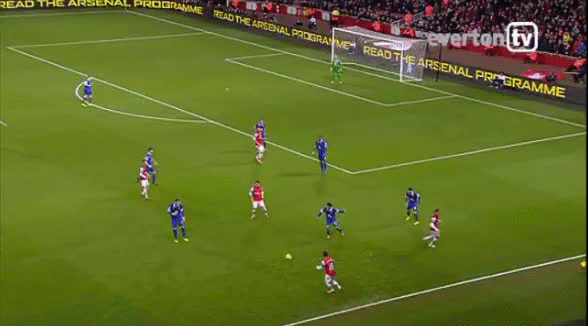Having watched a great lob over a goalkeeper and also a through ball in which the forward got to the ball  before the goalkeeper to score this last weekend, I thought I would try to help goalkeepers understand the importance of vertical play.
before the goalkeeper to score this last weekend, I thought I would try to help goalkeepers understand the importance of vertical play.
Vertical play, in my eyes, is the ability to be able to come off your line and also the ability to retreat.
THERE ARE TWO ASPECTS:
1) STARTING POSITION:
It is important that the goalkeeper minimizes the space between themselves and the defense, but also keeping in touch with the goal to prevent being chipped.
Three things which allow a high starting position.
i) The ball is a long way away ( such as in opponents half ) – You have assessed the strengths of the opposition and no one has the ability to chip it over you.
ii) When a forward has the ball at their feet but is facing away from your goal. – Again, you can’t get chipped when a player is facing the other way.
iii) When a defender is tight on to the player with the ball. You can advance here as the only thing the forward can / will do is take a heavy touch to get around the defender ( in which case you can dive at feet ) or they will play a through ball ( for you to collect ). [See the different ways to collect a through ball here]
2) RECOVERY SAVES ( adjusting to movement of the ball )
These recovery saves can be forward or backward depending on the situation. The aim is not to get caught in “No Man’s Land” – similar to that of a tennis player who has to either come to the net or drop to the baseline.
Coming forward: You would need to come forward to narrow the angle. A poor first touch by the forward would allow you to gain yards. When coming think of the 5 S’s – 1) Shut down, 2) slow down, 3) sit down, 4) stay down, 5) steal. – Too many goalkeepers who try to close down forwards waist their initial good work by having bodyweight back as they do not slow down prior to the forward shooting with the result of the ball going underneath were the goalkeeper should be stood.
Whether your forward vertical play is a normal pick up, point blank save, dive at feet or gate position delay you must ensure you are in ball line with the center of the goal.
Going backward: You may find yourself going back after a mistake has been made. A poor punch, an intercepted pass or even just a change of scenario where none of the three advanced starting positions mentioned above apply.
When recovering back, you must ensure you are still looking at the ball. Shuffle backward rather than back peddling which is slow and has a high risk of you falling. If a large area has to be recovered, goalkeepers may need to cross step to make up that initial large space.
Whilst recovering back you will deal with two scenarios.
a) Shot low. ( within the hight of your body with outreached arms ) You need to read the player and be “set” with your bodyweight forward when they strike the ball. In my opinion, one of the hardest things to do in goalkeeping.
b) High shot or chip ( higher than your outreached arm). Don’t let your feet stop. So many goalkeepers stop their feet once the ball is struck. The best goalkeepers gain the yards while the ball is traveling. You will either make a catch as you adjust your body weight forward or tip over the bar.
Vertical play – GK needs to recover back.
http://youtu.be/wcT5ITskuUo
Vertical play coming forwards.

